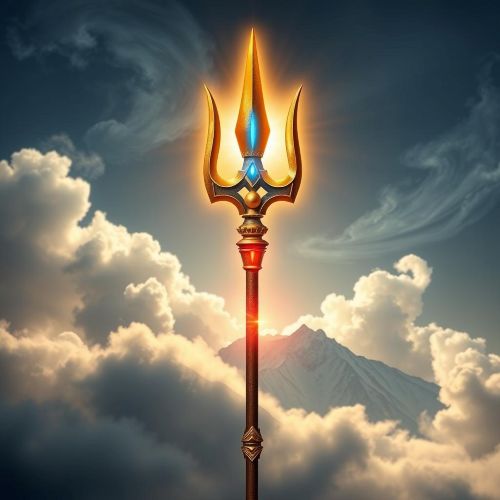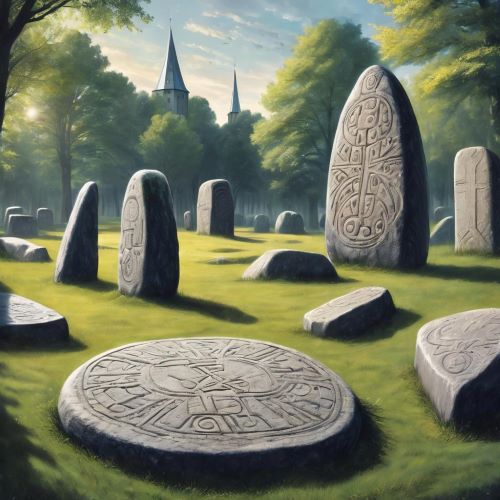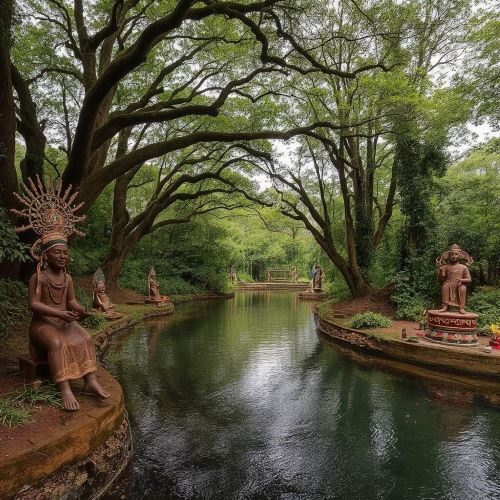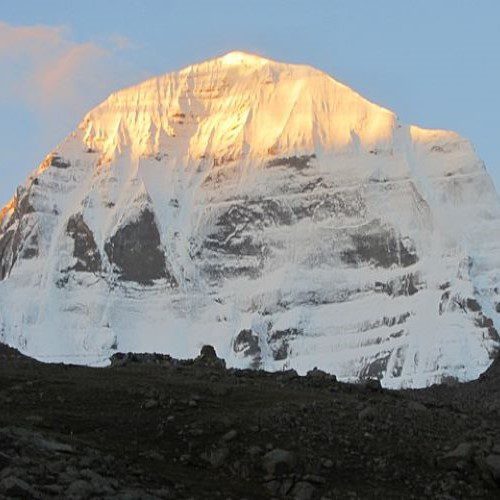Cahokia Mounds : The Sacred Spot
At a glance
| Description | |
|---|---|
| Mythology | Native American Mythology |
| Country | United States of America |
| Closest airport | St. Louis Lambert International Airport (STL) |
| Type | Constructed |
| Accessibility | 10/10 |
Introduction
Cahokia Mounds, located near present-day Collinsville, Illinois, is among North America’s most important archaeological landmarks. This site, spanning roughly 2,200 acres, was once the center of a vibrant Mississippian culture that thrived from around 600 to 1400 CE. It features impressive earthworks, including ceremonial and residential mounds, offering a window into the lives, beliefs, and ingenuity of its inhabitants.
Designated as a UNESCO World Heritage Site, Cahokia Mounds attracts visitors from across the globe, eager to delve into its fascinating history. The site also holds profound spiritual significance, rooted in Native American mythology. Stories and traditions tied to the landscape reflect the deep connection between its builders and the natural world, enriching the experience of those who explore its enduring legacy.
Connection with Mythology
Cahokia Mounds is steeped in the mythology and spiritual beliefs of the Mississippian people, reflecting their deep connection to the natural and cosmic worlds. Central to their traditions is the concept of creation and balance, often illustrated in myths like that of the “Sky Woman,” a figure representing humanity’s origins and the harmony between earth and sky. These stories embody themes of interconnectedness that resonate with the landscape surrounding Cahokia.
The mounds themselves symbolize cosmic order, with Monks Mound—the largest earthen structure in the Americas—likely serving as a focal point for rituals and ceremonies. It may have housed a temple or been the residence of a spiritual leader, linking the physical and divine realms. Exploring these narratives provides visitors with a richer understanding of the beliefs that shaped the lives of Cahokia’s inhabitants and the spiritual significance imbued in this extraordinary site.
Ways to Get There
Reaching Cahokia Mounds is simple, thanks to its convenient location near Collinsville, Illinois, just a short drive from St. Louis, Missouri. The site is well-connected, offering multiple travel options for visitors.
If flying, St. Louis Lambert International Airport (STL) is the closest major airport, located about 30 minutes away. For those driving, the site is easily accessed via Interstates 55 and 70, with clear signage leading to the visitor center and mounds. Ample parking is available on-site for private vehicles.
Public transportation options include taking a train or bus to St. Louis, followed by a taxi, rideshare, or local transit to reach Cahokia. Guided tours are also available, providing an organized and insightful way to explore the historic site. Clear directions and multiple travel modes make visiting Cahokia Mounds both straightforward and flexible.
What to Look For
Cahokia Mounds boasts several fascinating features that showcase the ingenuity and culture of the Mississippian people. Each highlight offers a unique perspective on this ancient civilization.
Monks Mound: Towering over 100 feet and spanning 14 acres, this monumental structure served as a central hub for ceremonial and administrative activities. Climbing its steps rewards visitors with sweeping views of the surrounding area.
Woodhenge: This reconstructed timber circle functioned as a solar calendar, aligning with solstices and equinoxes. It illustrates the Cahokians’ advanced understanding of astronomy and its role in agricultural planning.
Visitor Center and Museum: The museum houses a rich collection of artifacts and interactive exhibits that illuminate the daily lives, rituals, and achievements of Cahokia’s inhabitants.
Mound 72: Known for its intricate burials, this site provides insights into the social stratification and ceremonial practices of the Mississippian culture, including evidence of high-status individuals and ritual offerings.
Trails and Landscapes: The network of walking paths allows visitors to immerse themselves in the natural and historical beauty of the site while discovering lesser-known mounds and archaeological features.
Need a place to stay? Book your hotel room now!
Importance in cultural history
Cahokia Mounds stands as a remarkable testament to the ingenuity and cultural achievements of pre-Columbian North America. Once a thriving metropolis, it was home to a population of up to 20,000 at its height between AD 1050 and 1200, making it one of the largest cities in the world during its era. Its urban design and monumental earthworks demonstrate a sophisticated understanding of engineering, social organization, and resource management.
As a center of influence, Cahokia played a vital role in regional trade networks, connecting distant communities and fostering cultural exchange. The site’s impressive scale and complexity challenge outdated perceptions of indigenous societies as static, revealing instead a dynamic and interconnected civilization.
Preserving Cahokia Mounds is essential not only for understanding the Mississippian culture but also for appreciating the deep historical roots of Native American societies. The lessons embedded in this landscape remind us of the importance of cultural resilience, sustainable practices, and the enduring ties between communities and their environment.
Best time to travel
The ideal time to visit Cahokia Mounds depends on your preferences and what you hope to experience. Spring and fall are particularly popular for their mild weather and scenic beauty. In spring, blooming wildflowers and fresh greenery create a vibrant atmosphere, while fall offers striking foliage and crisp air, perfect for exploring the mounds and trails.
Summer provides longer daylight hours, making it suitable for those who enjoy spending extended time outdoors. However, the heat and humidity can be intense, so visitors should come prepared with water and sun protection. Winter, though quieter and colder, offers a serene experience, with fewer visitors and the opportunity to focus on the site’s rich history through the indoor exhibits at the Interpretive Center.
Regardless of the season, Cahokia Mounds presents a unique opportunity to connect with the history and culture of the Mississippian people, making it a compelling destination year-round.
Frequently Asked Questions
What is special about Cahokia Mounds?
Cahokia Mounds stands out as the largest prehistoric urban center north of Mexico, showcasing the impressive scale and complexity of the Mississippian culture. Its monumental earthworks, including the colossal Monks Mound, reveal sophisticated engineering and a hierarchical society. The site’s layout suggests advanced social and political organization, while structures like Woodhenge indicate astronomical knowledge.
What happened at the Cahokia Mounds?
At Cahokia Mounds, a significant urban center of the Mississippian culture flourished between roughly 1050 and 1350 CE. During its peak, tens of thousands of people inhabited the area, constructing over 120 earthen mounds for various purposes, including supporting important structures, burials, and possibly astronomical observations with the “Woodhenge.” It served as a major political, religious, and economic hub, with evidence of trade networks reaching across the continent. However, by the 1400s, the site was largely abandoned, with various theories including environmental factors like flooding and drought, resource depletion, social unrest, and warfare proposed as contributing to its decline. 3
What Indians lived in Cahokia Mounds?
The people who built Cahokia Mounds were part of the Mississippian culture, a widespread civilization in the Eastern US from around 800 to 1600 CE; their original name is unknown. Centuries after Cahokia’s abandonment, the Cahokia tribe, belonging to the Illinois Confederation, lived in the same region but were not the mound builders. Thus, the Mississippian people, not the later Cahokia tribe, were the inhabitants of the significant mound city during its peak.
What is buried in Cahokia Mounds?
Cahokia Mounds contain diverse burials, from common individuals to elite figures like the “Birdman” in Mound 72, accompanied by rich grave goods. Artifacts such as pottery, tools, ornaments, and ceremonial objects have been unearthed, providing insights into their society. Evidence of trade networks is present through non-local materials. These burials and artifacts reveal details about Cahokia’s social structure, religious beliefs, and material culture.
Why did Indians build Cahokia Mounds?
The Mississippian people built the Cahokia Mounds for a variety of interconnected reasons rooted in their complex social, political, and religious beliefs. These monumental earthworks served as platforms for important structures, including temples and the residences of elite leaders, signifying their power and connection to the sacred. The mounds were also used for burials, with significant individuals often interred with elaborate grave goods, reflecting their social status.








